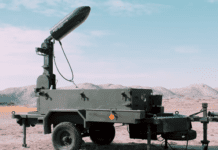This post is also available in:
 עברית (Hebrew)
עברית (Hebrew)
Quantum computers can solve complex problems exponentially faster than classical computers and are hailed as the future of computing; however, they are still vulnerable to attacks and need to be properly protected.
A team of researchers from the University of Texas developed an approach to give quantum computers an extra layer of protection with a solution they call Quantum Noise Injection for Adversarial Defense (QNAD).
According to Techxplore, this method counteracts the impact of attacks designed to disrupt inference (AI’s ability to make decisions or solve tasks), which can cause serious consequences, like an AI based smart car not recognizing a stop sign or misinterpreting it as a speed sign.
One of the challenges of quantum computers is their susceptibility to interference (or “noise”) due to factors like temperature fluctuations, magnetic fields or imperfections in hardware components. They are also prone to unintended interactions between qubits called “crosstalk.” Both noise and crosstalk can result in computing errors.
The approach the researchers took leverages innate quantum noise and crosstalk to counteract adversarial attacks, introducing crosstalk into the quantum neural network (QNN), a form of machine learning in which large datasets train computers to perform tasks, including detecting objects such as stop signs or other computer vision responsibilities. The researchers demonstrated that, during an attack, an AI application was 268% more accurate with QNAD than without it.
Shamik Kundu, a computer engineering doctoral student and a first co-author of the study, said the approach is designed to supplement other techniques to protect quantum computer security, and likens it to a seatbelt in a car: “In case of a crash, if we do not wear the seat belt, the impact of the accident is much greater. On the other hand, if we wear the seat belt, even if there is an accident, the impact of the crash is lessened. The QNAD framework operates akin to a seat belt, diminishing the impact of adversarial attacks, which symbolize the accident, for a QNN model.”

























